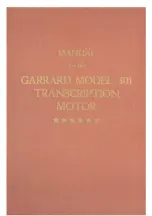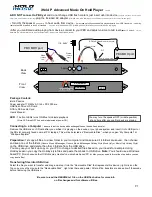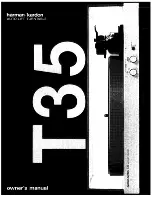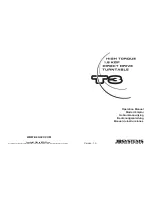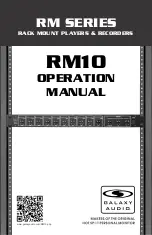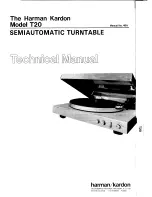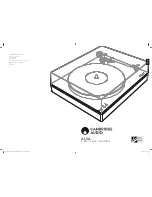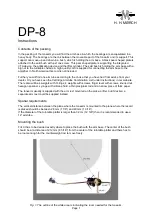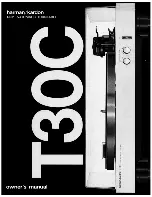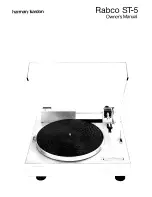
The cartridge, stylus, and
tonearm
3.1 MMC: Micro Moving Cross
As mentioned above, when a wire is
moved through a magnetic field, a
current is generated in a wire that is
proportional to the velocity of the
movement. In order to increase the
output, the wire can be wrapped into a
coil, e
ff
ectively lengthening the piece
of wire moving through the field. Most
phono cartridges make use of this
behaviour by using the movement of
the stylus to either:
•
move tiny magnets that are
placed near coils of wire (a
Moving Magnet
or
MM
design)
or
•
move tiny coils of wire that are
placed near very strong magnets
(a
Moving Coil
or
MC
design)
In either system, there is a
relative
physical movement that is used to
generate the electrical signal from the
cartridge. There are advantages and
disadvantages associated with both of
these systems, however, they will not
be discussed here.
There is a third, less common design
called a
Moving Iron
(or
variable-reluctance
) system, which
can be thought of as a variant of the
Moving Magnet principle. In this
design, the magnet and the coils
remain stationary, and the stylus
moves a small piece of iron instead.
That iron is placed between the north
and south poles of the magnet so that,
when it moves, it modulates (or varies)
the magnetic field. As the magnetic
field modulates, it moves relative to
the coils, and an electrical signal is
generated. One of the first examples of
this kind of pickup was the Western
Electric 4A reproducer made in 1925.
Figure 3.1: Figures from Rørbaek Mad-
sen’s 1963 patent for a Stereophonic
Transducer Cartridge.
In 1963, Erik Rørbaek Madsen of Bang
& Olufsen filed a patent for a cartridge
based on the Moving Iron principle. In
it, a cross made of Mu-metal is
mounted on the stylus. Each arm of
the cross is aligned with the end of a
small rod called a “pole piece”
(because it was attached to the pole of
a magnet on the opposite end). The
cross is mounted diagonally, so the
individual movements of the left and
right channels on the groove cause the
arms of the cross to move accordingly.
For a left-channel signal, the bottom
left and top right cross arms move in
opposite directions - one forwards and
one backwards. For a right-channel
signal, the bottom right and top left
arms move instead. The two coils that
generate the current for each audio
channel are wired in a push-pull
relationship.
Figure 3.2: Erik Rørbaek Madsen ex-
plaining the MMC concept.
There are a number of advantages to
this system over the MM and MC
designs. Many of these are described
in the original 1963 patent, as follows:
•
“The channel separation is very
good and induction of cross talk
from one channel to the other is
minimized because cross talk
components are in phase in
opposing coils.”
•
“The moving mass which only
comprises the armature and the
stylus arm can be made very low
which results in good frequency
response.”
•
“Hum pick-up is very low due to
the balanced coil construction”
•
“... the shielding e
ff
ect of the
magnetic housing ... provides a
completely closed magnetic
circuit which in addition to
shielding the coil from external
fields prevents attraction to steel
turntables.”
•
Finally, (although this is not
mentioned in the patent) the
1
reluctance is the magnetic equivalent of electrical resistance
2
Sound Recording Handbook”, ed. Glen Ballou
7




















